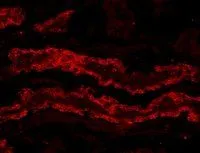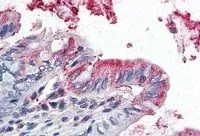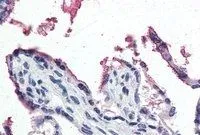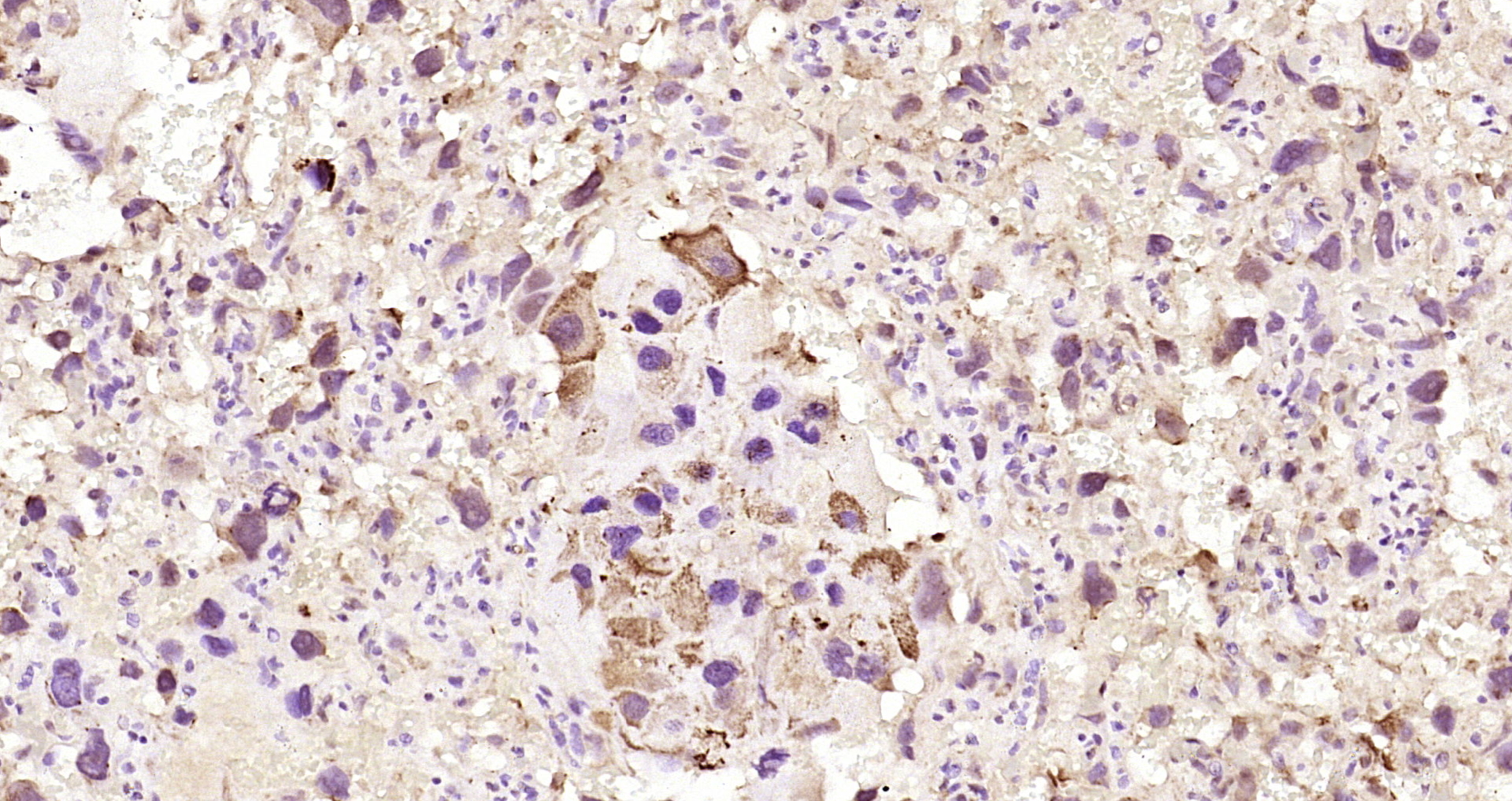
IHC-Fr analysis of PFA-perfused pig kidney using GTX89142 GPX3 antibody, Internal. Antigen retrieval : citrate buffer pH 3 Dilution : 20microg/ml
GPX3 antibody, Internal
GTX89142
ApplicationsWestern Blot, ImmunoHistoChemistry, ImmunoHistoChemistry Frozen, ImmunoHistoChemistry Paraffin
Product group Antibodies
TargetGPX3
Overview
- SupplierGeneTex
- Product NameGPX3 antibody, Internal
- Delivery Days Customer7
- Application Supplier NoteWB: 1-3microg/ml. IHC-P: 20microg/ml. *Optimal dilutions/concentrations should be determined by the researcher.Not tested in other applications.
- ApplicationsWestern Blot, ImmunoHistoChemistry, ImmunoHistoChemistry Frozen, ImmunoHistoChemistry Paraffin
- CertificationResearch Use Only
- ClonalityPolyclonal
- Concentration0.50 mg/ml
- ConjugateUnconjugated
- Gene ID2878
- Target nameGPX3
- Target descriptionglutathione peroxidase 3
- Target synonymsextracellular glutathione peroxidase; glutathione peroxidase 3; glutathione peroxidase 3 (plasma); GPx-3; GPx-P; GSHPx-3; GSHPx-P; plasma glutathione peroxidase; selenoprotein GPX3
- HostGoat
- IsotypeIgG
- Protein IDP22352
- Protein NameGlutathione peroxidase 3
- Scientific DescriptionThe protein encoded by this gene belongs to the glutathione peroxidase family, members of which catalyze the reduction of organic hydroperoxides and hydrogen peroxide (H2O2) by glutathione, and thereby protect cells against oxidative damage. Several isozymes of this gene family exist in vertebrates, which vary in cellular location and substrate specificity. This isozyme is secreted, and is abundantly found in plasma. Downregulation of expression of this gene by promoter hypermethylation has been observed in a wide spectrum of human malignancies, including thyroid cancer, hepatocellular carcinoma and chronic myeloid leukemia. This isozyme is also a selenoprotein, containing the rare amino acid selenocysteine (Sec) at its active site. Sec is encoded by the UGA codon, which normally signals translation termination. The 3 UTRs of selenoprotein mRNAs contain a conserved stem-loop structure, designated the Sec insertion sequence (SECIS) element, that is necessary for the recognition of UGA as a Sec codon, rather than as a stop signal. Alternatively spliced transcript variants have been found for this gene. [provided by RefSeq, Jul 2016]
- Storage Instruction-20°C or -80°C,2°C to 8°C
- UNSPSC12352203
References
- Salvianolic Acid C Protects against Cisplatin-Induced Acute Kidney Injury through Attenuation of Inflammation, Oxidative Stress and Apoptotic Effects and Activation of the CaMKK-AMPK-Sirt1-Associated Signaling Pathway in Mouse Models. Chien LH et al., 2021 Oct 15, Antioxidants (Basel)Read more
- Cancer-induced Cardiac Atrophy Adversely Affects Myocardial Redox State and Mitochondrial Oxidative Characteristics. Lee DE et al., 2021 Jan-Jun, JCSM Rapid CommunRead more
- Mitochondrial Function and Protein Turnover in the Diaphragm are Altered in LLC Tumor Model of Cancer Cachexia. Rosa-Caldwell ME et al., 2020 Oct 22, Int J Mol SciRead more
- Mitochondrial degeneration precedes the development of muscle atrophy in progression of cancer cachexia in tumour-bearing mice. Brown JL et al., 2017 Dec, J Cachexia Sarcopenia MuscleRead more







